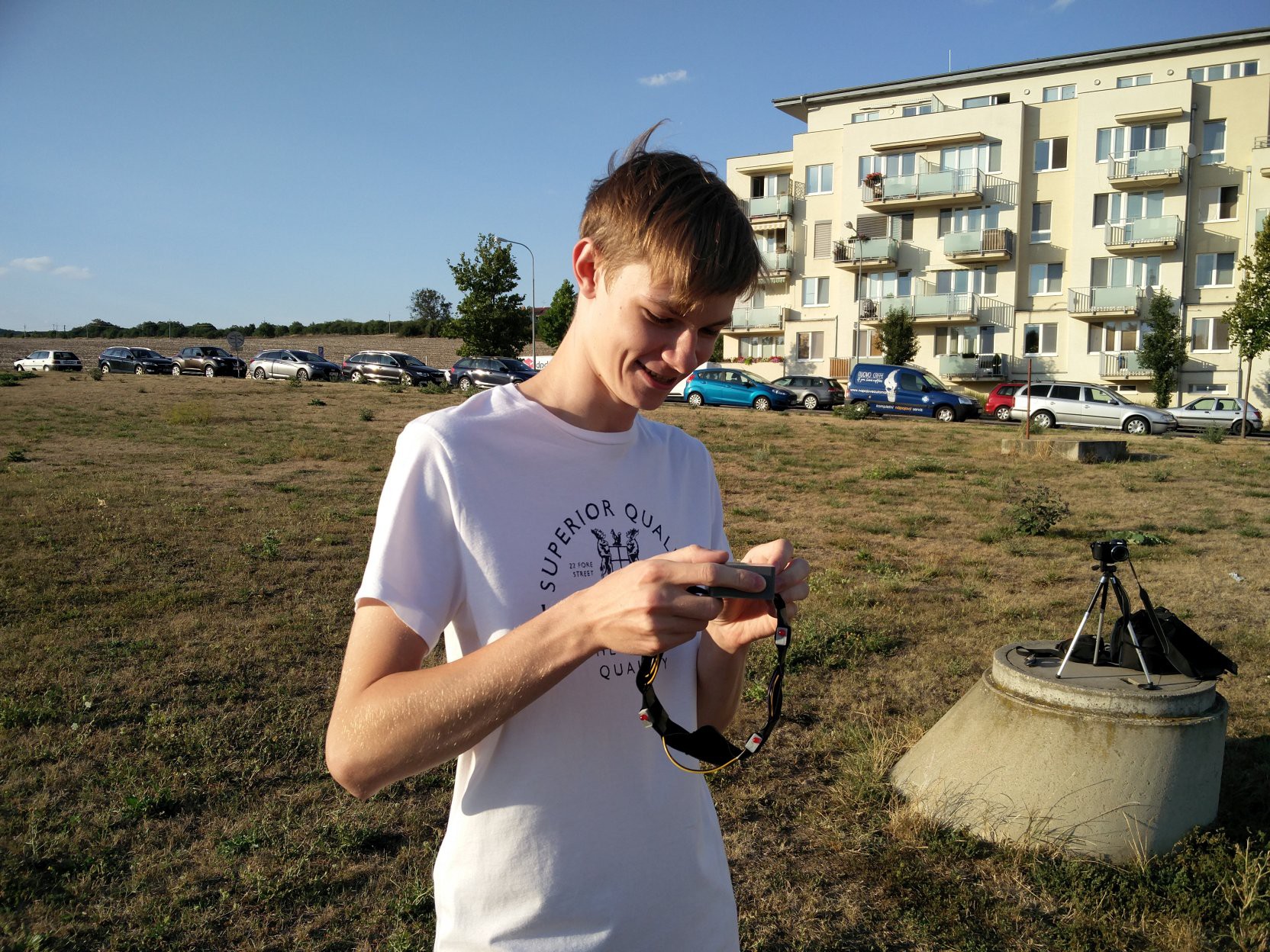With our first working prototype laying on desk in front of us, we decided to go out and do real-world testing. Currently, Ariadne Headband works as follow: you select a destination on your phone, customize vibration motors intensity and press start button. From that moment, motors on Headband will be activated, each time the proper ones that are in the direction where your should look. The motors will be vibrating until you look in the right direction. Then they will turn off until you start navigation again.

This was our first proper testing, outside of our homes. We found a best place where Ariadne Headband can be the most useful: big and empty field. From the start we quite enjoyed using it. We were happy that there was no loose cable and it worked. Boxing with components inside was designed by Tomas and is very well printed so everything stays on its place. We have yet to improve the rubber band as it was little bit tight for my larger head (Tomas was fine). For now we are holding the motors by ducktape, which is not the prettiest method. Once we choose the most universal length and width of the rubber band we plan to sew it everything together. And we will also omit the LEDs as they are mainly for effect (so we can easily see which motor is activated when it is not on our head).
The moment of truth
So we gave it a test. One of us put the Headband on his head and the other opened the mobile app a selected a destination close to our position. We were surprised how well it worked. The one of us with Headband on looked the right way most of the time. For the bystanders our testing may looked a little weird. But is not everything new a little weird? This first version of Ariadne Headband met our expectations. It is nice to finally turn on your project and see it work as it should.

The only occured problems were mostly software bugs. Android GPS location was sometime stubborn and took a while to find the current location. I believe that it is due to my phone’s privacy settings and should work better on regular phones. We also plan to use Android Services for GPS tracking so we can have location updates even when you do not have maps opened. Right now, GPS is triggered only when you press Select destination and will have to be find every time again. However, when you do not move it does not matter that much, because Android remembers your last position quite accurately.
Nevermind omnipresent programming bugs we were quite happy with results. We now know that our project is able to navigate you quite nicely. It is certain we will have to invest more time into making it more user friendly and fix troubling bugs.
When we make it into more advanced version we would like to try it with people that could give us useful feedback. We plan to visit local association of blind people as soon as it looks and works well enough.
 Vojtech Pavlovsky
Vojtech Pavlovsky
Discussions
Become a Hackaday.io Member
Create an account to leave a comment. Already have an account? Log In.